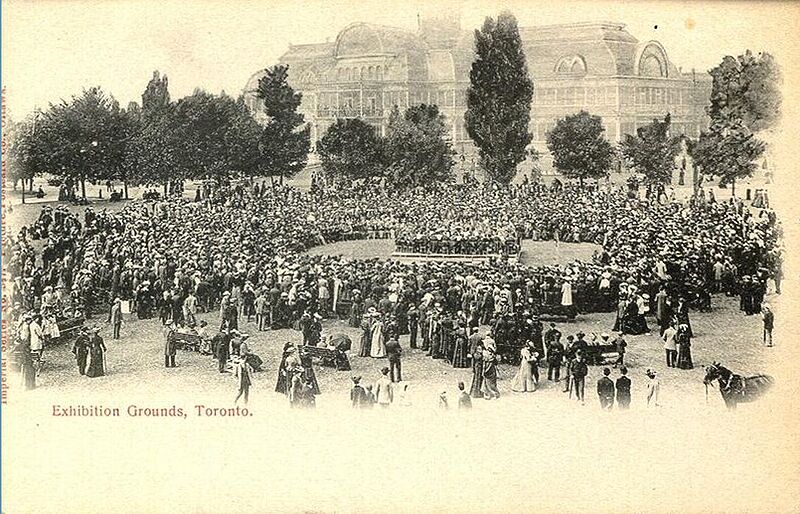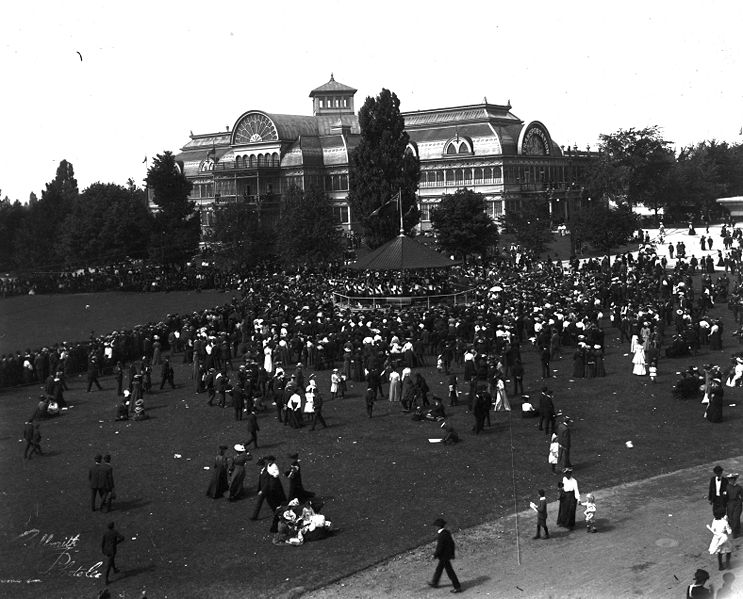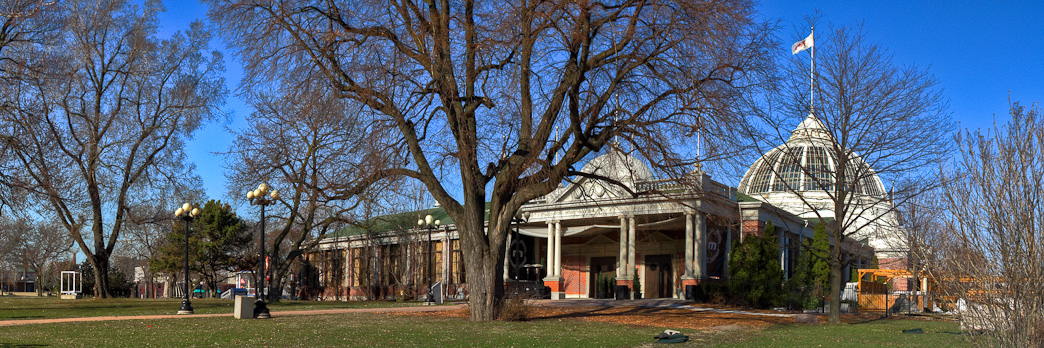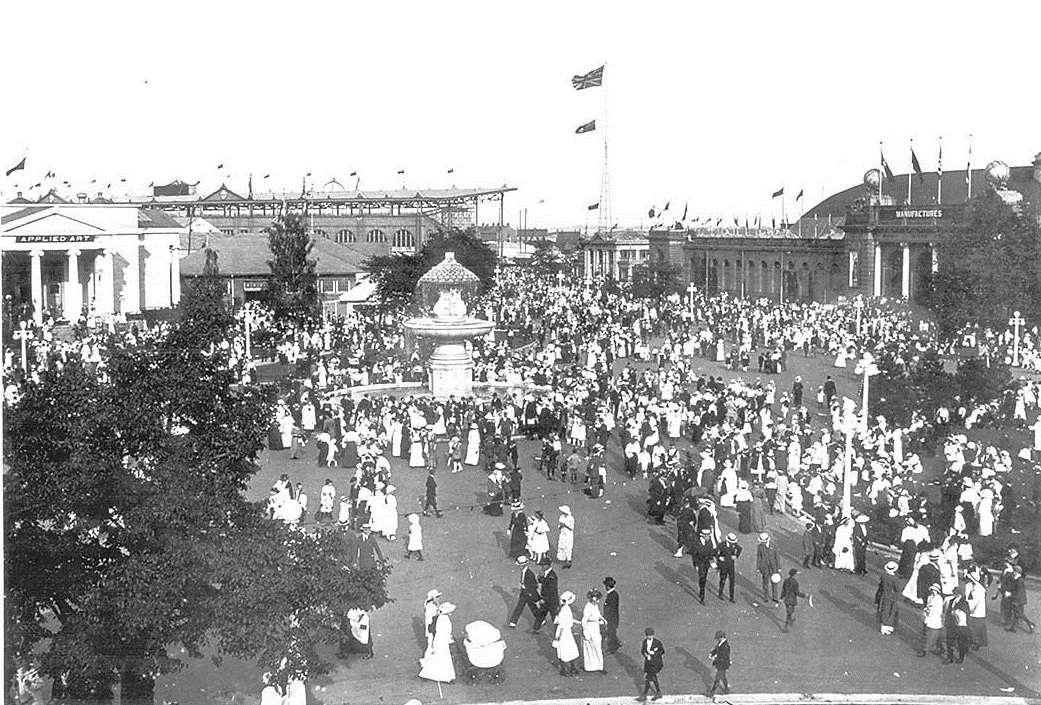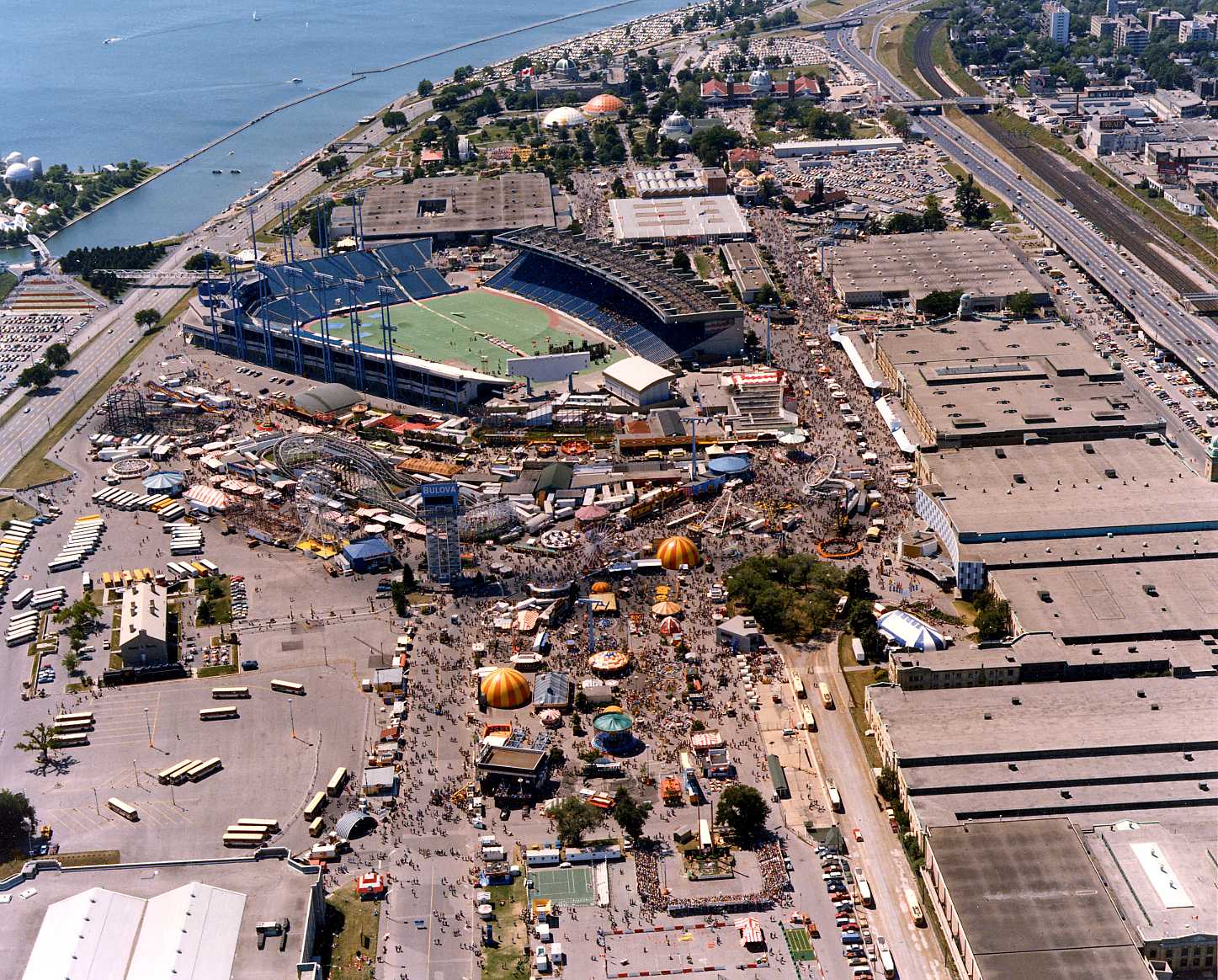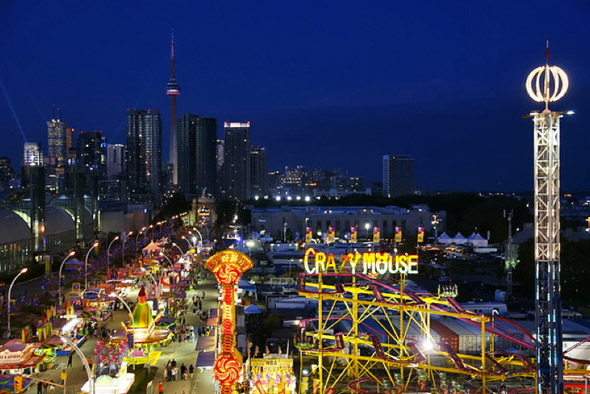The CNE Through the Years
Those of us who were fortunate enough to attend the CNE at the right time will remember the "the Flyer". It was a whitewashed wooden roller coaster, constructed by Conklin in 1953. It remained intact throughout the year, and was a permanent fixture until its demolition in the 1990s. The amusement park rides of the CNE are often compared to those at Canada's Wonderland. Especially for those of us who remember the "big" rides, like the Flyer, there is no comparison. The operators of the rides at Canada's Wonderland all look like neatly turned out, uniform clad, engineering students, who flick a switch and watch carefully, timing your ride to the second. This is in contrast to the ride operators at the Ex. Biker jackets and torn jeans seemed to make up their uniforms in the old days; they'd flick the switch to power on the machines, the sparks would fly out of the control panel, and they'd turn to share a smoke and chat with their friends for about twenty minutes. I remember riding the Flyer, and look back fondly at the bits of wood that flew off it as we rode ~ that was a real thrill ~ the definite chance that the whole ride may come crashing down around you before your ride was over. When we were younger, it seems like we took our lives in our hands just getting on those things, and it made it all the more exciting.
Another season has come and gone for the CNE. Some Torontonians are annual visitors, while some visit only occasionally. Most have memories of "the Ex", though. Even for those who haven't visited in years, remembering it will often bring a gleam to the eye, before they launch into their fondest memories of the grounds, even if their last visit was decades ago. I've been tentatively invited back, and may be doing more ghost tours of the grounds as early as later this month. However, for me, one of my greatest memories of the Ex will be from this year, when for two weeks I had the chance to become a "carny", and pitch the grounds of the CNE to the hundreds of visitors who came on the CNE ghost tours over those two memorable weeks.
___________________________________________
I've already starting taking reservations for my own ghost tours. They run all year, but starting on Thanksgiving Weekend, I will be doing them nightly. The Haunted Streets of Downtown Toronto tour runs every night at 7:00 p.m., and the Ghosts of the University of Toronto runs every night at 10:00 p.m. All tours are only $10 per person.
For more information, visit :
The Haunted Streets of Downtown Toronto
The Ghosts of the University of Toronto
The CNE grounds in 1908.
THEN : The CNE Midway in the late 1970s.
THEN : The CNE Midway in 2010.







